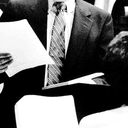
Today, February 8, marks the 100-year anniversary of the first lethal gas execution in the United States, exactly two weeks after Alabama carried out the first execution using nitrogen gas.
On February 8, 1924, Nevada executed Gee Jon, a Chinese immigrant convicted of killing the owner of a laundromat, using cyanide gas. A fellow prisoner, Thomas Russell, was also scheduled to be executed the same day but was resentenced to life by the Board of Pardons and Parole the previous evening. The gas chamber, which was built by prisoners, was first tested on two kittens, who died within 15 seconds of the gas’ release. During the test, a small leak was identified and subsequently fixed so it would not pose any danger to witnesses, 30 of whom attended Mr. Gee’s execution. According to the Reno Gazette-Journal, four Carson City prison guards resigned two days prior to the execution to avoid taking part. Four physicians, at the request of the prison warden, were present for the execution and, from outside the gas chamber, determined that Mr. Gee had no signs of life after six minutes. Due to the level of gas present in the chamber, prison staff waited two and a half hours before opening the chamber; an autopsy was not permitted.
The execution, which was Nevada’s first execution since 1916, was widely reported as a success by Prison Warden D. S. Dickerson and supported by physicians as painless and humane. “The execution was a success, but the method of application is dangerous,” said Prison Warden Dickerson, who preferred another method, like firing squad, that was safer for witnesses and staff. When the body of Mr. Gee was removed from the gas chamber, one of the physicians present, medical reserve officer for the U.S. Army Maj D. A. Turner, claimed to be able to resuscitate him, though his request was denied; a month later, the Nevada State Journal reported that Dr. Turner repeated these claims when addressing the Reno Lions Club, adding that “Gee Jon died of cold and exposure.”
After the execution, reporter Arthur Brisbane wrote, “If government insists on killing it should kill as savages usually do, choking with a rope, cutting off the head, or in some other savage fashion. Science and scientists should not be disgraced in the operation.” His article, published in the Nevada State Journal, continued “While ‘civilization’ was killing” Mr. Gee, five others were electrocuted in Texas, resulting in one warden’s resignation and another stating: “‘Pulling the switch of an electric chair means nothing to me.’” Countering this apathy, Mr. Brisbane wrote, “It means something to civilization. Ten thousand years hence this will be spoken of as an age that used to hang, shoot, asphyxiate, kill with electricity, and then foolishly expect criminals, with the undeveloped mind of children, NOT to imitate a murderous example set by government itself.”

On January 25, 2024, Alabama executed Kenneth Eugene Smith using the experimental method of nitrogen hypoxia. Mr. Smith inhaled the nitrogen gas through a mask, rather than a gas chamber, and witnesses reported he initially “shook and writhed.” Witnesses were not allowed to take phones or watches with them and had to rely on a clock with no second hand, resulting in a complicated execution timeline. Although it took 32 minutes from the curtains being opened to Mr. Smith being declared dead, the execution was deemed a “success” by state officials.
Since 1976, there have been 12 lethal gas executions conducted by six states (Alabama (1), Arizona (2), California (2), Mississippi (4), Nevada (1), and North Carolina (2)). Mr. Smith’s execution was the first lethal gas execution since 1999. Execution witnesses of previous lethal gas executions have similarly observed signs of distress to lengthy executions. Attorney Jim Belanger wrote of his client Donald Harding’s 1992 execution in Arizona: “It took 10 minutes and 31 seconds for Don Harding to die. For at least eight of those minutes, he was writhing in agony.” Dan Morain, one of 18 journalists among a total of 48 official witnesses, described the 1992 execution of Robert Alton Harris as a “macabre and surreal scene” and concluded that he would never attend another execution. The international community has criticized past executions as they did with Mr. Smith’s: the German Justice Minister Herta Daeubler-Gmelin called the 1999 execution of German national Walter LaGrande, which took 18 minutes, “barbaric.”
Currently two other states, Mississippi and Oklahoma, have authorized nitrogen hypoxia as an alternative execution method. The head of Oklahoma’s prison system, Steven Harpe, and his chief of staff, Justin Farris, have said they’re also exploring using the method as an option. But Oklahoma Governor Kevin Stitt has stated that his opposition to switching to nitrogen gas. “I know exactly how it works. I know exactly what they’re doing. I don’t want to change a process that’s working,” he said. Legislation to introduce nitrogen hypoxia as an execution method is under review in the Nebraska and Ohio legislatures, both states that have allegedly had difficulty obtaining the chemicals required for lethal injection executions. Airgas, a private industrial gas distributor, has already announced its opposition to supplying nitrogen gas for executions.
JULIE CARR SMYTH, Could Ohio be the next state to use nitrogen gas in executions? A new method would end a 5‑year halt, Associated Press, January 30, 2024; SEAN MURPHY, Oklahoma governor says he’s not interested in changing from lethal injection to nitrogen executions, Associated Press, January 30, 2024, Randy Dotinga, Execution by gas has a brutal 100-year history. Now it’s back., The Washington Post, January 24, 2024; Arthur Brisbane, Today they killed Gee Jon, Nevada State Journal, February 9, 1924; Gee Jon is Declared Victim of Cold Exposure Instead of Gas, Nevada State Journal, March 7, 1924; Could Have Revived Gee Jon Doctor Says, Reno Gazette Journal, March 6, 1924; Chinese Slayer Pays Penalty for Mina Crime When Poison Spray is Released at Prison, Reno Gazette Journal, February 8, 1924; Gee Jon Nods, Dies In Vapor, Nevada State Journal, February 9, 1924


